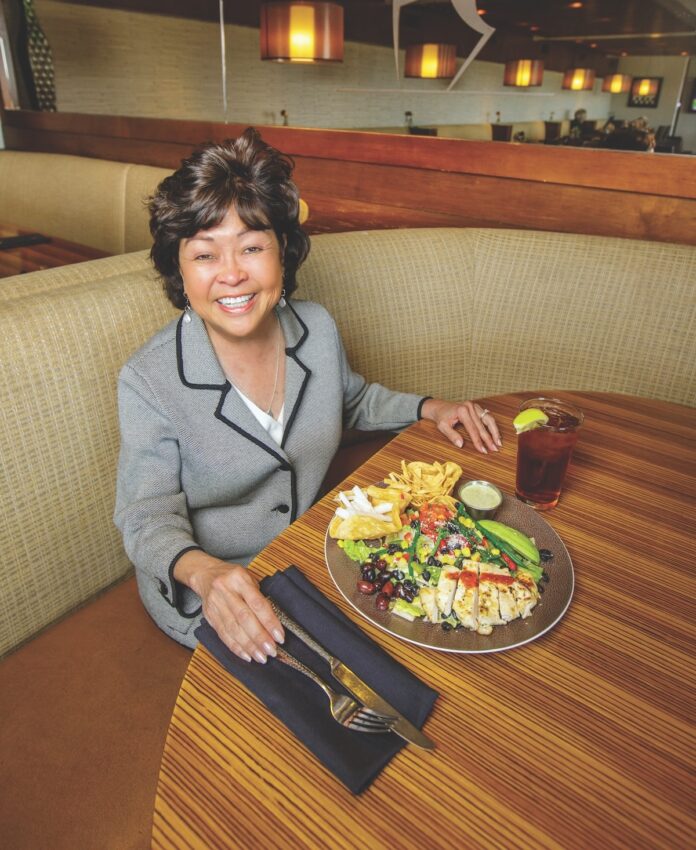Pegi Matsuda’s resume is as long as it is diverse. From 1999 to 2012 she was the publisher of the San Fernando Valley Business Journal. Upon leaving that publication, she served as foundation president at Valley Presbyterian Hospital.
In 2018 she founded a consulting practice, now known as On Board. The Sherman Oaks-based company works with small businesses and nonprofit clients to help both manage their businesses better. On Board offers, among other services, organization planning, communication services and board development. Matsuda also helps with fundraising programs, and holds a Certified Fund Raising Executive certification.
Matsuda has also been involved on many boards over the years, including the Fernando Award Foundation, VICA, the Valley Economic Alliance, ACG-101 Corridor, Woodbury University, Southern California Association for Healthcare Development, Valley Presbyterian Hospital, West Hills Hospital and the Community Foundation of the Valleys.
“I think the Valley has something for everyone … I can’t see myself living anywhere else,” Matsuda says of her work in the area.
She sat down with the Business Journal at the Braemar Country Club in Tarzana for a power lunch.
You’ve had an interesting career path, moving from publishing to working with a hospital to starting your own consulting business. What do these industries have in common, and what made you interested in pivoting between these varied sectors? My career path has been somewhat unconventional, and some of my industry changes confused my friends and colleagues, and sometimes, even me. While the industries are different, I’ve basically been leading similar tasks in each of these industries, such as external relations, public affairs/public relations, marketing, communication, strategic planning and operations. Mostly, I’ve had the opportunity to be a leader of people, processes and projects, independent of the industry.
Like many professionals, I was recruited into these industries by people who knew me and saw me in their businesses and organizations in a way I initially didn’t see myself. While maintaining a consulting practice takes energy and time, deciding on starting the practice took about 10 seconds. In launching my practice, I identified the skills I already had and matched these skills with what I like to do.
What advice can you give to nonprofits looking to make changes to their boards? It really depends on what changes the board is trying to make. Many times, board or staff have already identified the change they want to make, but the challenge is usually how to implement the change. One example is board recruitment. The board may already know they need more members but may need assistance to create and to implement a strategic process to make sure they identify, recruit and successfully onboard the new members they are seeking. Another example is board succession planning. Many nonprofit board members have legacy board members who have significantly contributed time and money to the nonprofit over many years. It is difficult to replace these board members, so succession planning is needed for the board as well as for staff.
There’s been a push recently to get more women and people of color on boards. How have you worked on this, and what are some of the difficulties associated with getting minorities on more boards? The focus on identifying and recruiting women and people of color on boards is not a new concept, but I know it may not always be an ‘active reality’ for everyone. Most of my clients are seeking women and minorities for their boards because they already understand the changing and multilayered landscape of Los Angeles.
So, while most people understand the importance of women and minorities on boards, they may not always understand the board recruitment process, which includes having the network … to identify and to recruit.
Pivoting to company boards, I’m a volunteer with an organization that promotes women on corporate boards and co-lead a webinar to help women start their board journey. As of December, women held almost 30% of board seats on national company boards, which does increase every year. Although progress is slow, progress is being made through the leadership of other women who have shared their own journey to the corporate boardroom.
You are also very involved in a number of boards yourself. How do you pick which ones to join? I have a lot of community and social interests, so it’s sometimes challenging to focus on where I would fit in. Candidly, I’m most passionate about economic development, job training and general job preparation. I believe that when a person has access to education, job training and general job preparedness, everyone in society benefits. While I’ve also been on boards with other missions, I generally always come back to my passion. I also like supporting organizations that support small business, especially women-owned and women-led companies.
What is next for you? I don’t have a bucket list, but I love to travel and to see new places. Career-wise, I’ve always had great jobs with great employers and (am) now working on my own. I’m having fun thinking about the future and look forward to the many roads I have yet to travel. – HANNAH WELK
